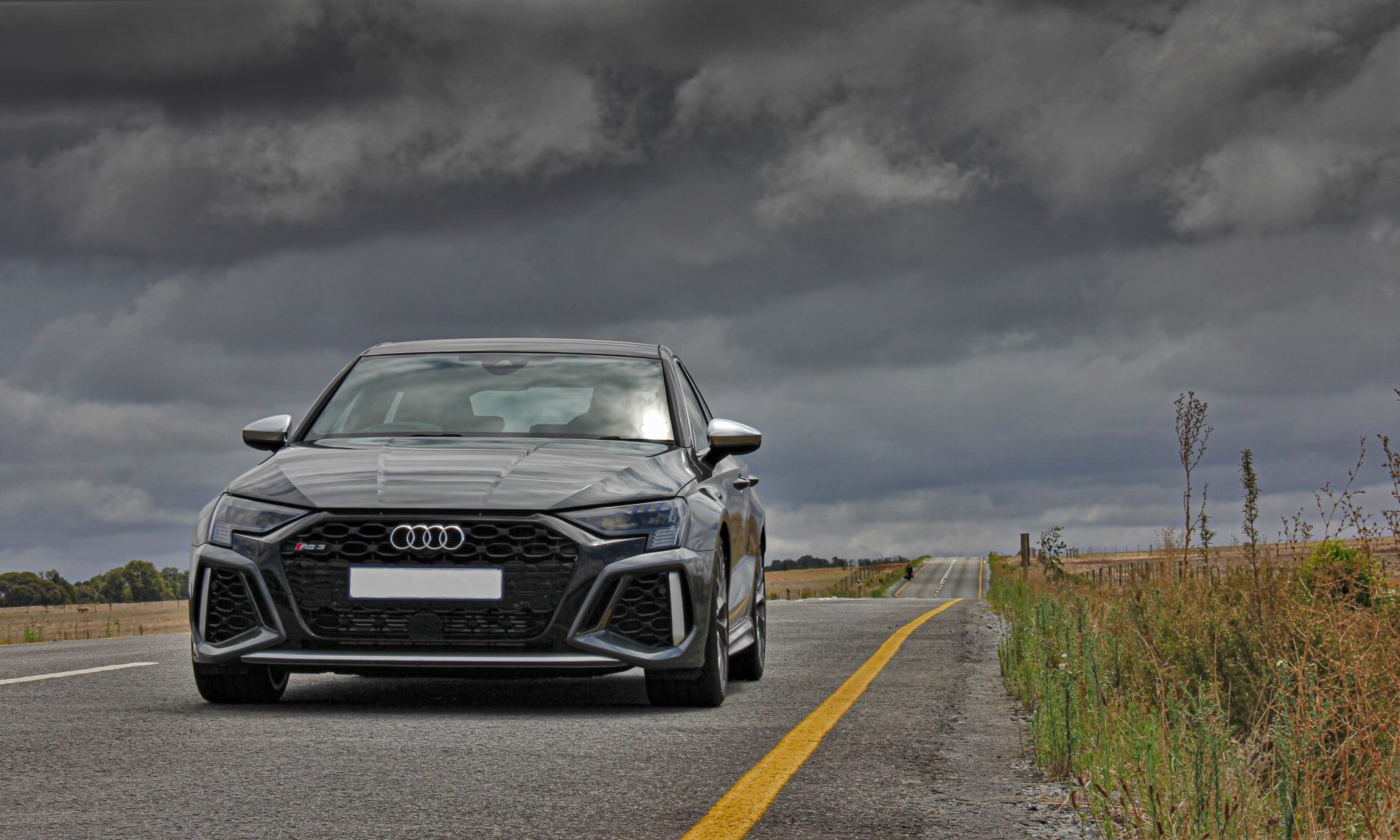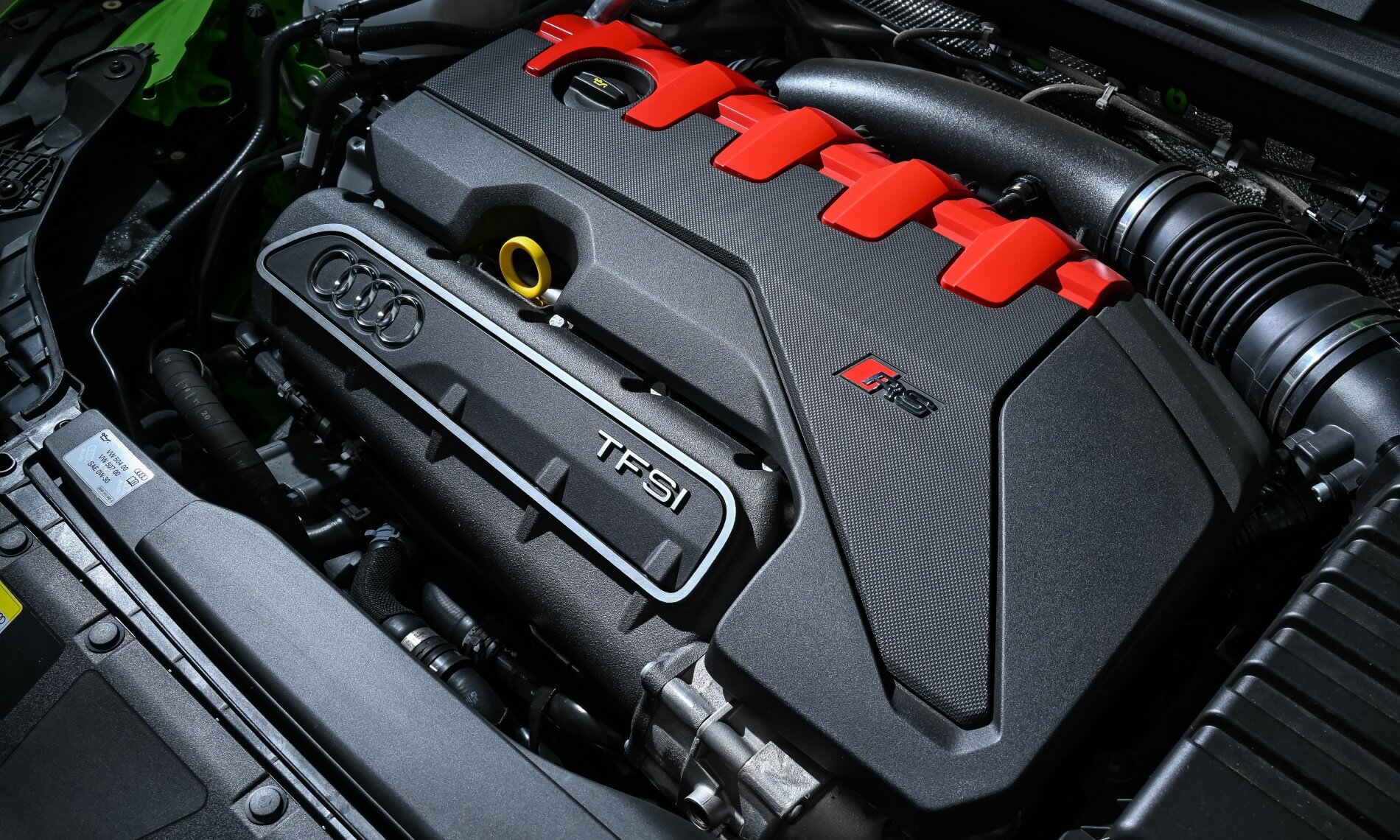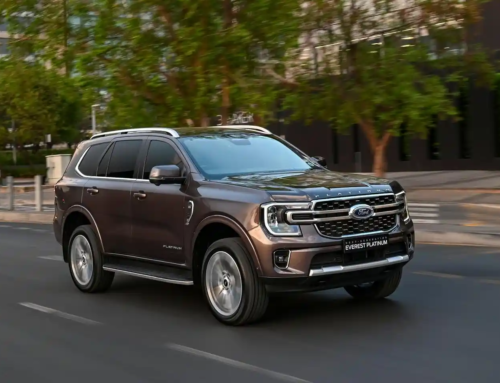When an Audi RS3 Sportback was offered to us for review purposes, we were pretty quick to accept the offer.
Audi South Africa introduced the RS3 into our market toward the latter part of last year. We didn’t make it to the national ride and drive event, which is why we were eager to experience the new model when it was offered to us on ‘home soil’.
Follow Double Apex on Instagram and Facebook where we share more car content.
Two Styles
Audi simultaneously released the latest RS3 in two distinct body styles. The RS3 sedan and the Audi RS3 Sportback. Presumably, the ownership profile of each shape correlates slightly with one’s age. The five-door Sportback derivative may appeal to a slightly younger buyer than the more mature three-box sedan silhouette.
It is the ‘younger’ version of the apex A3 that we had in our care for a few days. Audi offers the RS3 range in a number of exciting and evocatively named hues. Among these are python yellow, tango red, turbo blue and Kyalami green. However, the test unit on loan was finished in one of the least inspiring shades: Daytona grey.
Hidden Menace
The metallic grey may not be the most exciting, but the Audi RS3 Sportback has just the right level of menace to let onlookers know that they are looking at something special. The LED headlamps feature a snazzy ‘R’ ‘S’ and ‘3’ that flash through the corner LED matrix on start-up.
Massive front air intakes on the model-specific front bumper lead into widened front fenders. The rear bumper, which is also specific to the RS3, features a pair of fat oval exhaust tips. On the Sportback version there is also a roof-mounted spoiler on the tailgate.
The wider front arches, and similar items at the rear, cover 19-inch cross spoke-style alloys. These standard alloys cover six-pot calipers that clamp ventilated and drilled discs that measure 375 mm at the front and 310 mm at the rear. Oh, and the most powerful A3 also rides closer to the ground.
Overall, we are fans of the RS3 Sportback’s appearance. Although, if we were going to order one it would not be in this dour colour. From the few examples we have seen on the roads, it seems that most owners agree with our sentiment.
Interior
Audi’s interiors are some of the best in the business. The Audi RS3 Sportback does not disappoint in this area. The front seats are deep, Nappa leather-covered items with diamond quilting on them, not dissimilar to the kind of finish you’d find in a Bentley… nice! Although it is an R18 200 option.
In fact, the test unit was fitted with quite a few extras. Some of which we’d really expect to be standard at this level/price point. For example, the MMI Navigation plus with MMI touchscreen costs just shy of R40 000. We’ve mentioned the two of the more expensive items on the extras list, but there are enough to add 17 per cent, or R206 900, to the total cost of the ‘base’ car.
Unique Powertrain
Thankfully, the main item that makes the RS3 an RS3 is its unique engine. The Audi RS3 Sportback is powered by the brand’s familiar 2,5-litre inline-five. The turbocharged engine draws a link to rally cars of the company’s motorsport past. It produces an unchanged 294 kW of power from its predecessor. Although, at 500 N.m peak torque has increased by 20 N.m.
Power is channelled to all four wheels through a familiar dual-clutch transmission. Audi says both versions of the latest RS3 can sprint from rest to 100 km/h in 3,8 seconds. The top speed is rated at 250 km/h as standard, though that can be lifted to 290 km/h if new buyers are keen.
The inline-five, as we recalled, does not possess ‘lag-free’ power delivery. There’s a bit of old-school feel to the way it inhales before unleashing full power. And, unless we are very much mistaken, the engine note in the newer car seems a bit subdued when compared to its predecessor. Even in its loudest exhaust mode the new car feels as though it could do with a tad more volume.
Same Power…
Fast Audis of old were really one-trick ponies. They were fast, but purely in a straight line. They tended to fall over themselves with lumpen dynamics when faced with a corner, and found lacking from an engagement perspective when compared to their closest rivals.
Read our slightly different take on the Mercedes-AMG A45S and its place in the world of rallying.
We are happy to report that the latest Audi RS3 Sportback is a proper driver’s/driving enthusiast’s car. Usually, when a replacement model arrives it does so with more power than its predecessor. This is not the case with the RS3. It’s as though Audi engineers felt the RS3 already had enough power on offer, it just needed to be better to drive. And this aim has been well achieved.
…more Polish
The latest Audi RS3 Sportback flows down the road with far more polish than any of its predecessors. The spring and damper rates are well judged so the car isn’t thumping and crashy over less than ideal surfaces. The sense of improved body control improves with speed. Thanks to remaining in solid contact with terra firma you can use more power more of the time, which makes the RS3 an extremely effective (read: fast) way to cover ground.
Part of the RS3’s improved dynamic repertoire is the standard ‘torque splitter’ fitted on the rear differential. The name is pretty self-explanatory, but you can learn how the system works in this video. The RS3’s driving modes (comfort, auto, dynamic, RS Individual, and efficiency) have been programmed with the torque splitter in mind.
Toggling through the modes reveals a car with a real playful side, one that feels as though more power is being sent rearward. It’s not a leery like an older RWD BMW M car, but it is a quantum leap over the old, nose-heavy/understeery RS cars that used to be par for the course. There is a surfeit of grip from the front axle, in part from tyres that are wider by 20 mm per side. This also helps promote a bit of the angle one can obtain across the rear axle.
Summary
We are happy to report that the Audi RS3 has come along way. All that was good about the package has remained: great interior, aggro appearance and practicality of the five-door hatch body style. To that the RS engineers have added a new level of driving dynamics and increased driver engagement. We’re a bit sad that the tuneful, warbly five-pot has been robbed of its full volume. This is probably the last hurrah for an iconic engine with a storied past. But we are glad to see it go in a car that befits its legacy.
Model: Audi RS3 Sportback
Price: R1 246 600
Engine: 2,5-litre inline five, turbocharged
Transmission: seven-speed DSG, AWD
Max power: 294 kW
Max torque: 500 N.m
0-100 km/h: 3,8 sec
Top speed: 250 km/h
Fuel consumption: 9,0 L/100 km









Do you think that modern day hot hatches have lost the affordability element of a hot hatch?